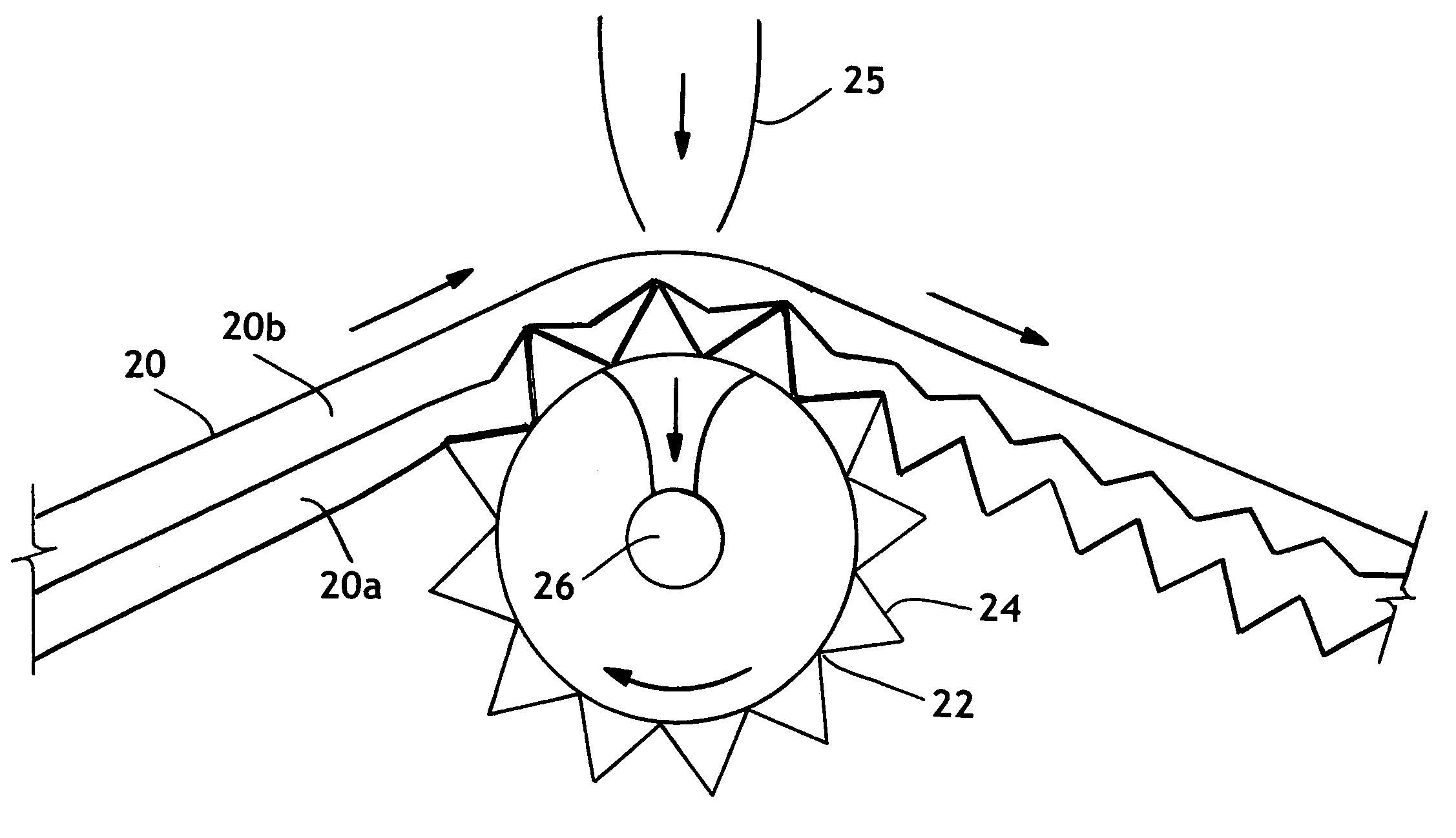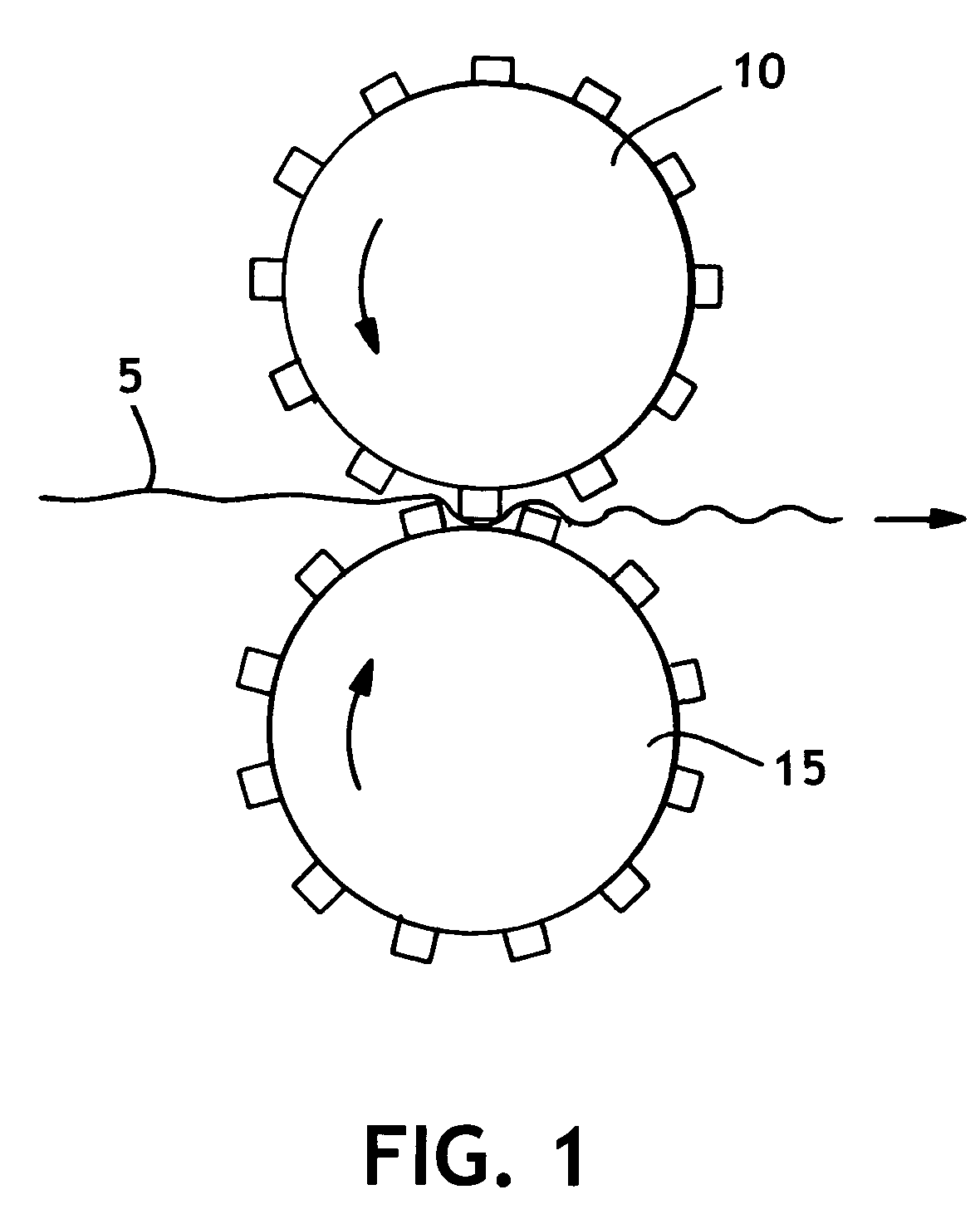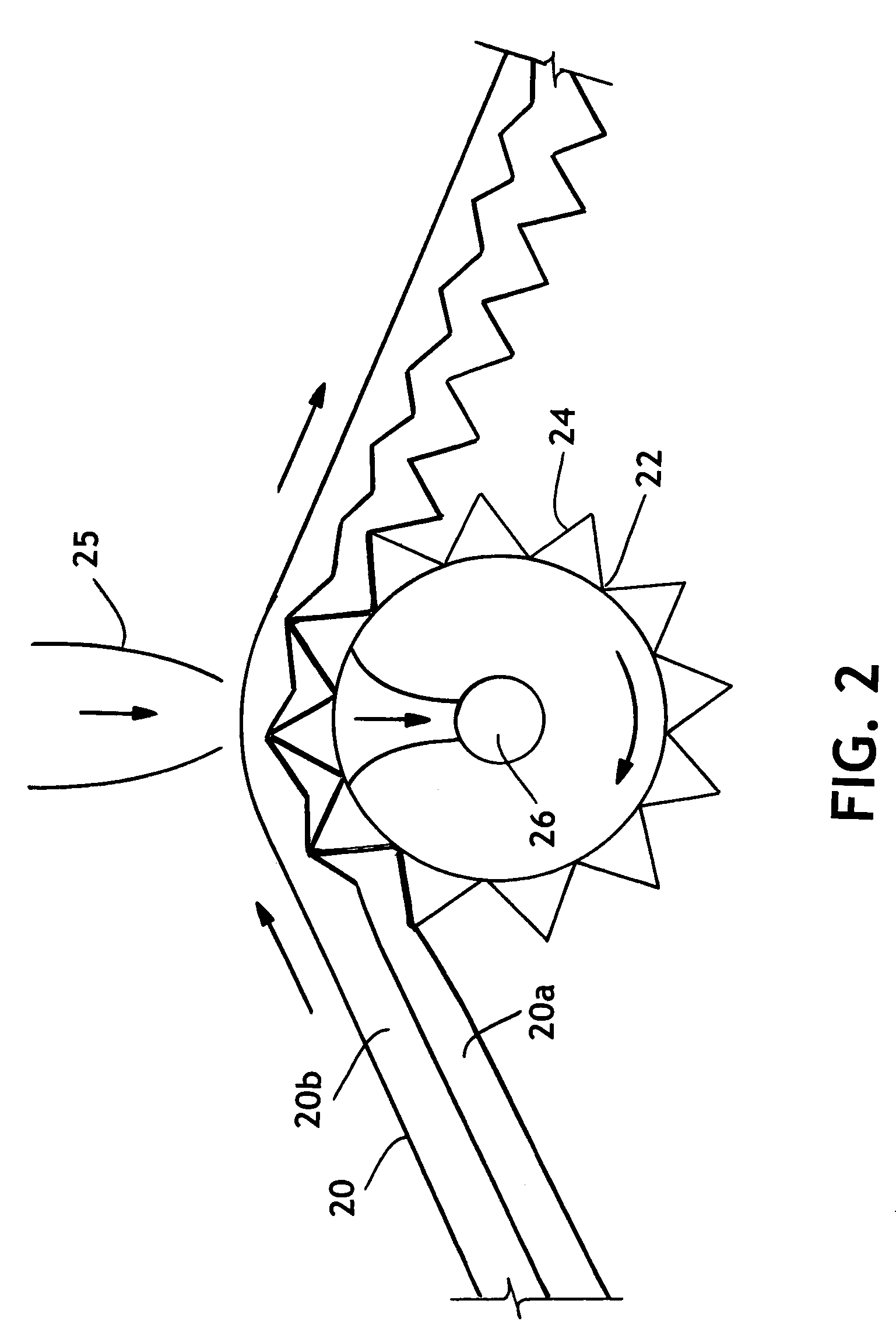Method of making paper using reformable fabrics
a technology of fabric and fabric, applied in the field of making paper using fabric, can solve the problems of reducing affecting and wasting time, so as to achieve the effect of improving the productivity of paper machines
- Summary
- Abstract
- Description
- Claims
- Application Information
AI Technical Summary
Benefits of technology
Problems solved by technology
Method used
Image
Examples
example 1
[0061]In order to further illustrate the method of this invention, a laminated two-layer non-woven throughdrying fabric was produced with a tissue-contacting surface having a relatively fine three-dimensional topography. The fabric was used to produce a molded throughdried handsheet having a correspondingly relatively fine surface. The throughdrying fabric was then remolded to provide the web-contacting surface with a different, coarser three-dimensional topography. This remolded throughdrying fabric was then used to make a second handsheet having a different surface topography (more coarse) relative to the first handsheet.
[0062]More specifically, the non-woven base fabric comprised a spunbond web made from bi-component fibers with a concentric sheath-core structure. The sheath material comprised Crystar® 5029 Polyethylene Terephthalate (PET) polyester resin (The DuPont Company, Old Hickory, Tenn., USA). The core material comprised HiPERTUF® 92004 Polyethylene Naphthalate (PEN) poly...
example 2
[0070]To illustrate a different method of reforming papermaking fabrics in accordance with this invention, a strand of thermoplastic long-chain hydrocarbon wax (Uchida of America, Co, Torrance, Calif. 90503) was applied via extrusion to the top surface of a woven fabric (style t1207-6, Voith Fabrics, Florence, Miss.). A photograph of the woven fabric is shown in FIG. 12. The wax strand was applied to form a decorative raised pattern above the plane of the fabric base texture as shown in FIG. 13.
[0071]Following the handsheet procedure described in connection with Example 1, a handsheet was made from this fabric. In particular, the handsheet was made by taking a pre-made blank sheet (see Example 1) and laying it on top of the patterned side of the fabric. The sheet was then wetted to bring the solids content of the wet sheet down to 25%. The wet sheet, still on top of the patterned fabric, was then molded by traversing a vacuum slot (about ½″ (about 12.7 mm) slot width) at a vacuum of...
PUM
| Property | Measurement | Unit |
|---|---|---|
| temperature | aaaaa | aaaaa |
| temperature | aaaaa | aaaaa |
| diameter | aaaaa | aaaaa |
Abstract
Description
Claims
Application Information
 Login to View More
Login to View More - R&D
- Intellectual Property
- Life Sciences
- Materials
- Tech Scout
- Unparalleled Data Quality
- Higher Quality Content
- 60% Fewer Hallucinations
Browse by: Latest US Patents, China's latest patents, Technical Efficacy Thesaurus, Application Domain, Technology Topic, Popular Technical Reports.
© 2025 PatSnap. All rights reserved.Legal|Privacy policy|Modern Slavery Act Transparency Statement|Sitemap|About US| Contact US: help@patsnap.com



